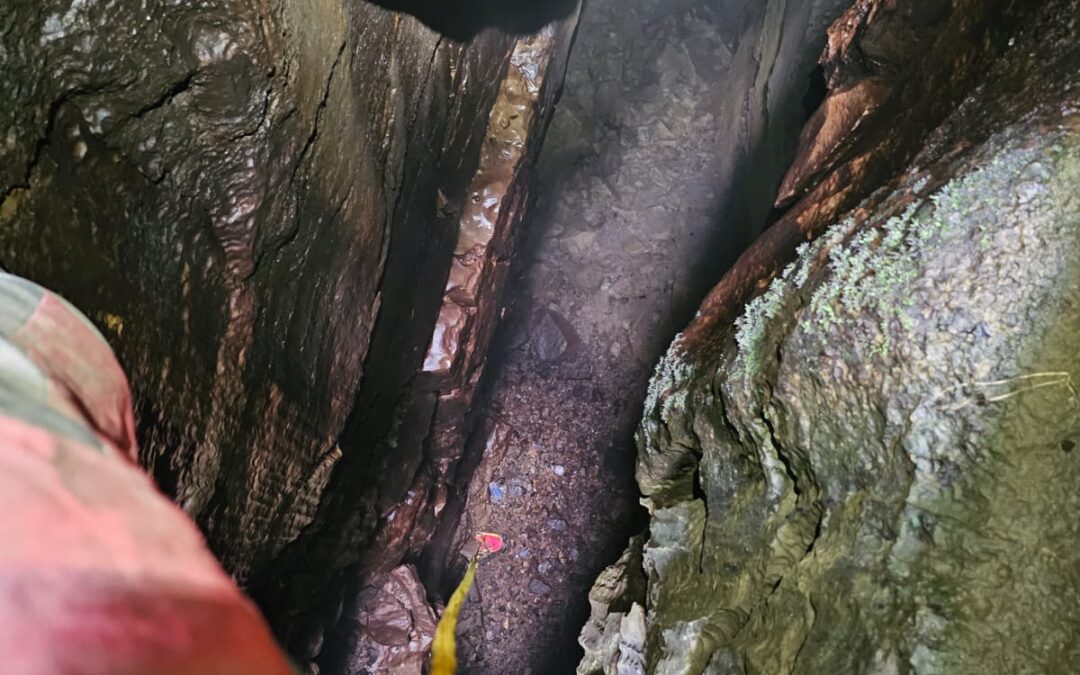Adventurous Activities often include exposure to height, with climbing and mountaineering being the first activities to conjure visions of vertigo in the mind. Although in reality most adventurous outdoor activities involve coping with heights in some way; caving, hill walking, canyoning and even a more adventurous Kayaking. People are often surprised that caving makes the list of at-height activities as we imagine storybook scenes of an arched cave entrance leading to a horizontal passage into a hillside. Of course, it is possible to do more gentle horizontal underground walks, but in reality we have hundreds of caves in the UK that involve vertical passages only accessible by long abseils of 50, 60 and 70 metres or more. In fact, the Peak District’s “Titan” has the UK’s longest drop of 141 metres, that’s around the height of the Blackpool tower.
So how do we set about Enjoying Heights? I think we can divide people into three categories based upon their ability to cope with heights; those that partake in at-hight activities purely for because they want to be high. Those that tolerate heights in order to get their reward; reaching the top of a mountain, or getting to the bottom of a cave because they want to see what’s there. And there are those that just hate heights and believe they can never tolerate them. However, three types have one thing in common – they are not born to love heights and if they say they are they are not telling the truth!
Becoming comfortable with heights is learned. Some people will become comfortable with heights sooner than others, it’s true, but every individual need to develop a number of techniques to be able to function at height. This is done in a number of ways. Just like a muscle, the brain needs to be exercised by a regular and continued exposure to height. Even the boldest climbers will need a period of “getting their head in” to heights after a long break. They will do this by easing into shorter climbs before going for the bigger ones. Continued exposure (without accident of course) builds up confidence and, just like a strong muscle, the brain will use less energy worrying about its situation leaving a clear mind to think rationally about where we are and what to do. Skill at height: Whatever activity at height you are doing – let’s say vertical caving – there will be a plethora of technical skills all designed to keep you from hitting the ground. If you are shaky at these skills or know you have gaps in your skill set, this will affect your confidence at height. Being slick and well-practiced in rope skills for example will fill you with confidence. Knowing, for sure, that your skills can get you out of a situation will fortify your confidence and leave you enjoying your lofty situation rather then dreading it. Equipment knowledge is also important for coping with heights. If you are abseiling from steel bolts in a cave and you know that the bolt can hold a metric done of weight, and you are attached to two of them – this will instil confidence. Knowing that your rope can suspend a family car without breaking, knowing that your harness would hold the weight of ten adults… leaves you feeling much safer. So you need to do your homework and learn what you equipment is capable of. All of this equipment knowledge, built up over a period of time allow you to enjoy where you are.
There isn’t a person alive who can look into a black, bottomless void or peer down a precipitous cliff without feeling their pulse increasing, isn’t that why we do it? And you can be sure that those seemingly superpowered heroes who seem immune to height have felt the fear at points in their vertical hobbies. But anyone can control their instinctive fear of heights with three practical steps: Training, experience and knowledge. It’s time to start training your brain and enjoying heights.

